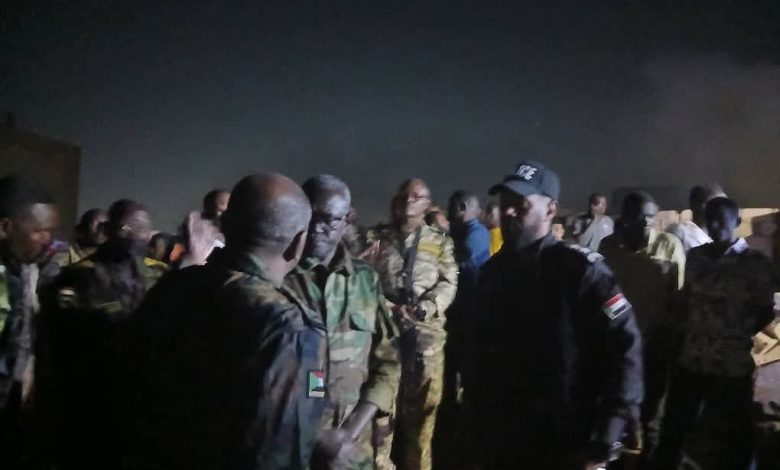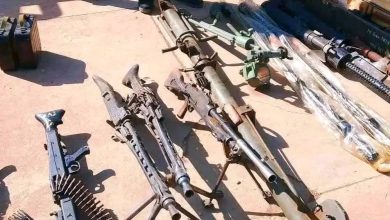The “Aging” Antonov Deepens the Wounds of Sudanese People

Report by: Fath al-Rahman Shabariqa
The crash of the military Antonov aircraft belonging to the Sudanese Air Force has deepened the wounds of a country suffering from the horrors of war, especially after it fell in a populated area in Omdurman city, leaving dozens of casualties, including military and civilian leaders.
Amidst a sad atmosphere, the bodies of 46 victims of the plane crash were laid to rest in Khartoum State on Wednesday, with the funeral procession led by the Governor of Khartoum, Ahmed Osman Hamza, and the Chief of Staff of the Sudanese Army, General Mohamed Osman Al-Hussein, along with senior military officials.
The recent crash of the military plane in the housing area of Omdurman, minutes after taking off from the Wadi Sidna military base, revived similar incidents that raised controversy regarding the reasons behind the repeated crashes of military aircraft, the readiness of the Sudanese military air fleet, and its adherence to maintenance procedures to ensure the safety of aerial operations.
Old and Worn-Out Aircraft
Former Sudanese Air Force officer, Hassan Majzoub, attributed the cause of military aircraft crashes to the age and wear of the planes.
He pointed out that the Air Force plays the biggest role in the war, and that arming aviation and air defense systems is an exhausting process for the state and requires a lot of money.
However, security expert, Major General Jamal Al-Shahid, told Al-Jazeera, that aircraft crashes are a natural occurrence that can happen in any country, and mentioned several reasons for this, including technical faults due to lack of maintenance, bad weather conditions, being hit by enemy aircraft, overloading, and issues related to the efficiency and coordination of the aircraft crew.
He confirmed that “the U.S. embargo at one point prevented spare parts for aircraft from reaching Sudan, and this had a significant impact.” He said this embargo was not without reason, “but rather was to ensure that Washington controlled all aspects of the game and brought Sudan to a zero power situation, unable to confront the opposing side that implements U.S. policies.”
Al-Shahid admitted the impact of frequent use and the age of the planes in Sudan, where some aircraft have been in service for 50 years and are periodically maintained to extend their service life. However, he noted that the true cause of the crash “would be revealed from the radar or the black box that records the most accurate details.”
The Doomed Aircraft
Retired Sudanese Army Major General Osama Mohamed Ahmed Abdel Salam said that the Antonov 32 aircraft that crashed on Tuesday evening due to a technical failure was on a routine flight from Wadi Sidna to Port Sudan, carrying several officers from the armed forces.
“The pilot attempted to return to the airport, but God’s will did not allow him to do so, and the plane crashed in the housing area, adding to the nation’s and the armed forces’ pain with the loss of its finest sons.”
He explained to Al-Jazeera that the Antonov 32 (AN-32) aircraft was first manufactured on July 9, 1976, and a total of 361 units were built, with the price of each aircraft ranging from $12 to $15 million.
The first official announcement about the aircraft was at the Paris Air Show in May 1977, and its NATO codename was “Klein.” In July 1976, the first prototype of the Antonov AN-32 made its first flight.
A Moving Coffin
General Osama Abdel Salam stated that the crashed aircraft was part of the Sudanese Air Force fleet, which is still in service despite having completed 50 years of operation and should have been retired if air safety standards were applied.
Despite this, the doomed aircraft continued to fly over Sudan’s skies, with Sudanese Air Force pilots taking the risk of flying it, fully aware that they could lose their lives at any moment.
General Abdel Salam described the aircraft as a “moving coffin,” yet the pilots still bravely carried out their missions with a high degree of risk.
He considered the presence of such an aircraft in the armed forces fleet to be “a contradiction to claims that 80% of Sudan’s budget goes to the military. If there were a budget of that size, these types of aircraft would have been retired much earlier.”
He emphasized that the armed forces are the nation’s shield and must be financially supported to remain strong, efficient, and well-equipped with the latest weapons, equipment, vehicles, and aircraft.
“Flying Coffins”
In addition to “moving coffins,” some in the public and media circles have referred to the old Antonov aircraft as “flying coffins,” due to their frequent crashes in Sudanese airspace.
Al-Jazeera has reported on dozens of aircraft crashes in Sudan’s airspace over the last two decades, especially in the south, west, and east of the country. Cities such as Nyala, Al-Fasher, Al-Obeid, Al-Geneina, Gadaref, Kassala, Port Sudan, and Khartoum itself have all witnessed various incidents of military and civilian aircraft crashes.
High-ranking military, political, executive, and constitutional leaders have lost their lives in aircraft accidents at various airports and regions of Sudan, the most notable being former First Vice President of Sudan, General Zubair Mohamed Salih, who died in an Antonov crash in February 1998.
The Tuesday crash killed 46 people, some of whom were civilians, but most were military personnel, including prominent Sudanese Army generals, Bahr Ahmad Bahr and Abu Al-Qasim Ali. Observers expect air accidents to continue as long as old aircraft are used in the country.
Source: Al-Jazeera Net



